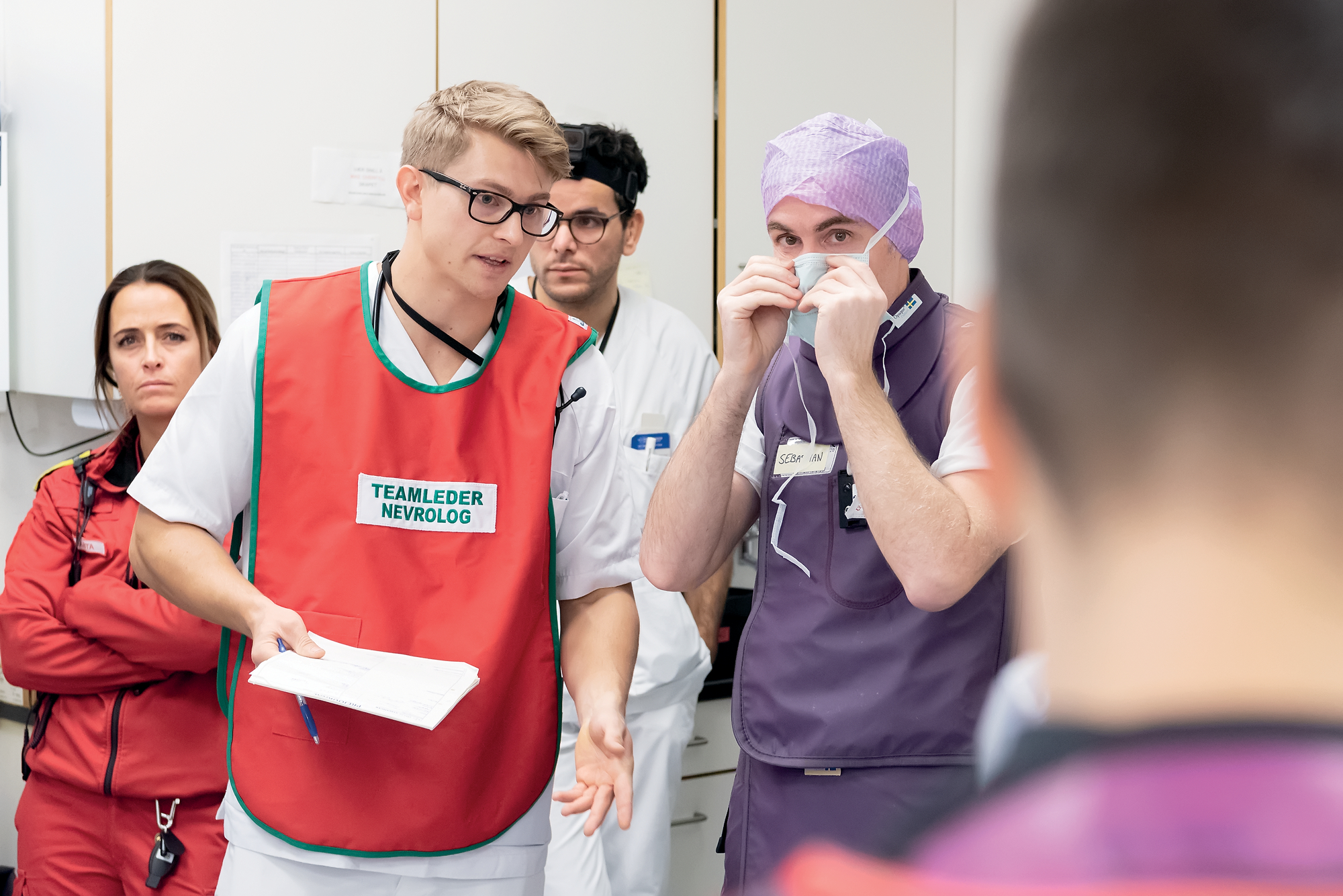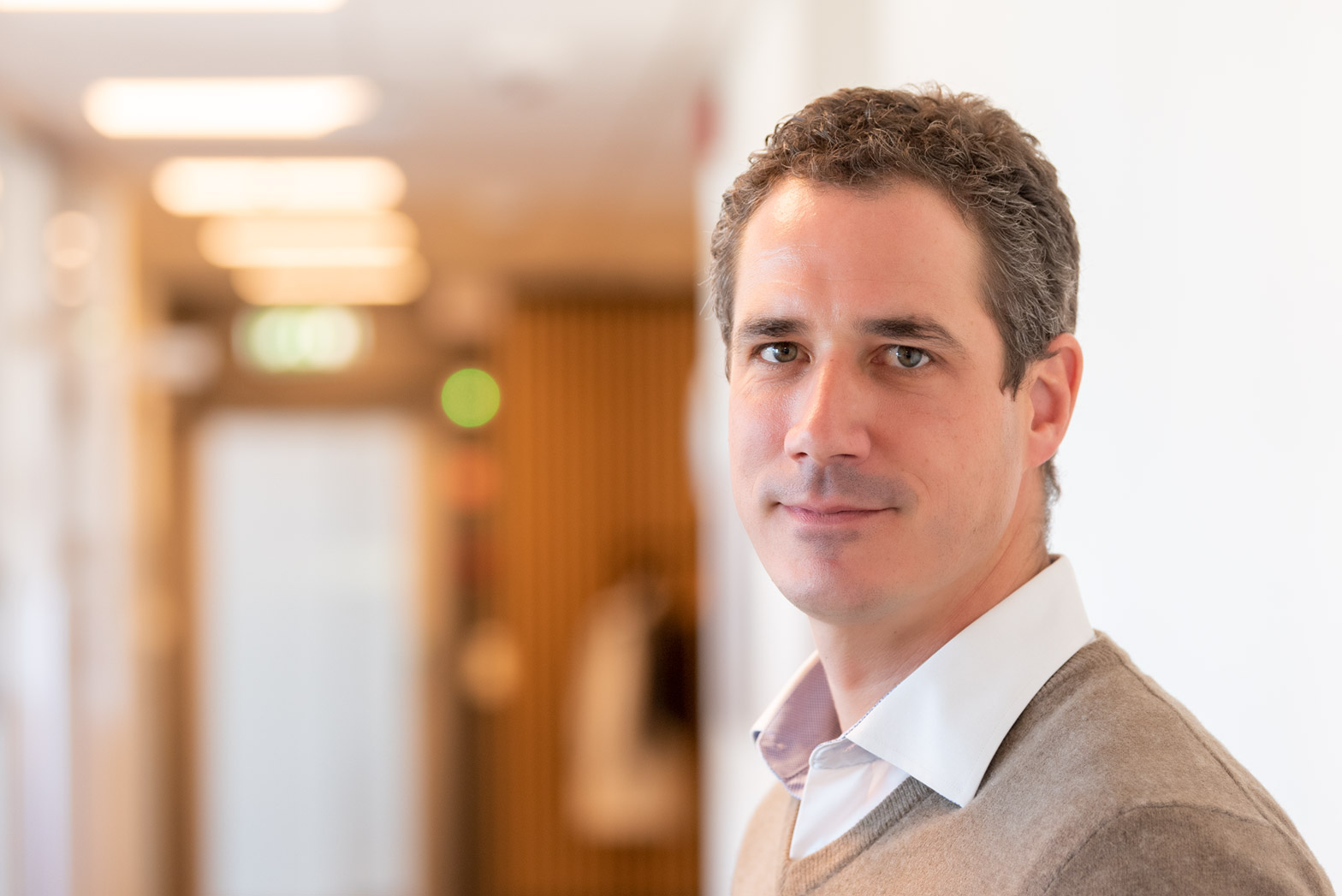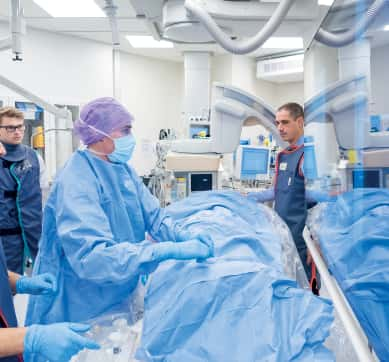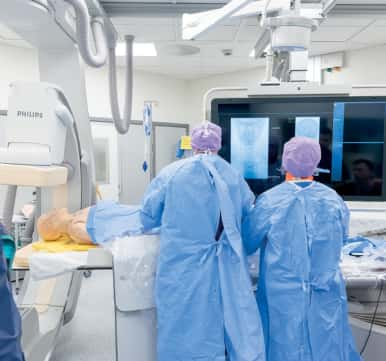Stroke
Saving time means saving lives
Worldwide, stroke is the second leading cause of death and the third leading cause of disability. According to the World Health Organization, strokes often affect individuals at the peak of their productive life. This leads to a significant impact on countries’ socio-economic development. Stroke is a global health problem.
For every minute without treatment, it is estimated that almost 2 million brain cells are lost. That’s why early identification and treatment is critical to survival – not only survival, but survival with positive outcomes. If these patients don’t get protective drugs until two, three or four hours later, irreversible brain damage will have already occurred.
Know the signs of stroke

Sudden numbness or weakness of the face, arm or the leg, especially on one side of the body.

Sudden trouble walking, loss of balance or coordination.

Sudden trouble speaking or understanding.

Sudden trouble seeing or loss of vision on one side.

Sudden headache with no known cause.

"Several years ago, I suffered a stroke. I recognize the need within healthcare for identifying stroke symptoms quickly and I am now helping researchers and hospitals to better learn how to train for this.”
- Lin Iren Giske Andersen, Stroke Advocate, stroke survivor
Let’s talk about stroke
Promoting public awareness about stroke is essential. Information needs to be provided to the public about the warning signs of stroke and the need to seek medical attention quickly. Policy makers need to be better informed of the public-health and economic impact of stroke in order to consider preventative measures. Healthcare professionals require knowledge and skills for evidence-based prevention, acute care, and rehabilitation of stroke.

Time is critical for survival
Use simulation training to learn:
- Warning signs to identify a stroke quickly
- Psychomotor skills required for stroke treatment
- To efficiently transport and handover patients
- To perform as an individual and as part of a team
- Effective communication skills
It is also important to develop a network of "ambassadors for simulation" for stroke treatment, who can lead the way for changes in protocol.
Saving time means saving lives.
When time matters most
If treated quickly and correctly, a stroke survivor may have no symptoms at all. If that is not the case, a stroke survivor can suffer major disability and require constant care or not survive at all. Reducing the time it takes to get treatment is essential to improving stroke outcomes.
It has been shown that improving the pathway of care by streamlining treatment protocol in combination with in-situ simulation-based team training led to an immediate and remarkable reduction of door-to-needle times in stroke.
How can we decrease the time it takes to receive treatment?
We can train.
Stavanger University Hospital
Saving time – saving lives
Patient outcomes from stroke treatment are highly time-dependent. A project at Stavanger University Hospital in Norway reduced door-to-needle time by 50%.
In the project, doctors and healthcare providers systematically worked towards reducing the time from arrival at the emergency room to the start of thrombolysis administration. A median door-to-needle time of under 30 minutes was achieved and maintained, a time within recommended protocols.
However, it was hypothesized that door-to-needle time could be even further reduced by implementing a revised treatment protocol and in-situ simulation-based team training sessions. After streamlining protocols and simulation training that included communication and decision-making, door-to-needle times were significantly reduced from 27 to 13 minutes. This remained consistent after 13 months.
References
Ajmi SC, Advani R, Fjetland L, et al. (2019). Reducing door-to-needle times in stroke thrombolysis to 13 min through protocol revision and simulation training: a quality improvement project in a Norwegian stroke centre BMJ Quality & Safety.
https://qualitysafety.bmj.com/content/early/2019/06/29/bmjqs-2018-009117.full

“We have seen that simulation training in teams has been extremely effective for reducing time to treatment. And getting treatment quickly and effectively can mean the difference not only between life and death, but also quality of life.”
- Dr. Martin Kurz, Head of Stroke Department, Stavanger University Hospital
Laerdal involvement
Together with our partner, Mentice, we adapted our well-known SimMan simulator with vascular functionality. Pre-programmed stroke scenarios to train for how to navigate the pathway of care for stroke.


